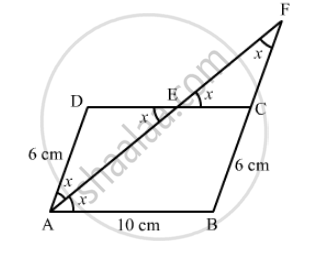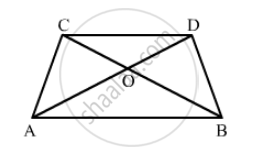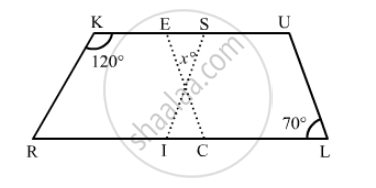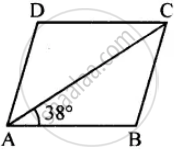Advertisements
Advertisements
Question
In a parallelogram ABCD, AB = 10 cm, AD = 6 cm. The bisector of ∠A meets DC in E, AEand BC produced meet at F. Find te length CF.
Solution

APPEARS IN
RELATED QUESTIONS
Given below is a parallelogram ABCD. Complete each statement along with the definition or property used.
(i) AD =
(ii) ∠DCB =
(iii) OC =
(iv) ∠DAB + ∠CDA =

In the following figure RISK and CLUE are parallelograms. Find the measure of x.

In the following Figure ABCD is a arallelogram, CE bisects ∠C and AF bisects ∠A. In each of the following, if the statement is true, give a reason for the same:

(i) ∠A = ∠C
(ii)
(iii)
(iv)
(v) CE || AF
Fill in the blank, in the following, so as to make the statement true:
A rhombus is a parallelogram in which ......
The diagonals of a quadrilateral are perpendicular to each other. Is such a quadrilateral always a rhombus? If your answer is 'No', draw a figure to justify your answer.
Construct a rhombus whose diagonals are of length 10 cm and 6 cm.
Show that each diagonal of a rhombus bisects the angle through which it passes.
If all pairs of adjacent sides of a quadrilateral are congruent then it is called ______.
ABCD is a rhombus. If ∠BAC = 38°, find :
(i) ∠ACB
(ii) ∠DAC
(iii) ∠ADC.

If the adjacent sides of a parallelogram are equal then parallelogram is a ______.
